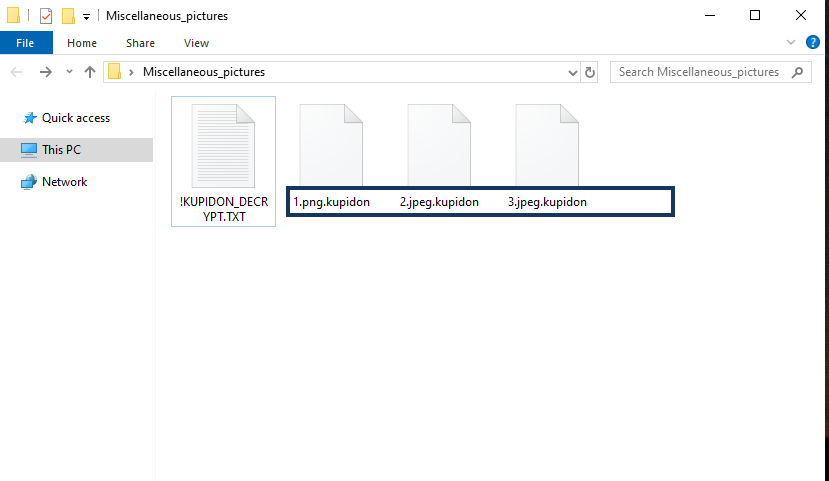Kupidon
Kupidon is a cryptovirus of the ransomware class that cybercriminals use to blackmail web users for money. The way Kupidon attacks the computer is through encryption which locks the victims’ files and makes them inaccessible so that a ransom can be demanded for them.

Ransomware infections are quite common tools for money extortion but what is worse is that their attack may result in the loss of very valuable information. The aim of ransomware threats like Kupidon and ColdLock is to encrypt the files that are stored on the infected computer so that the hackers can later blackmail the victims to pay a ransom for a decryption key. This criminal scheme is very simple and straightforward. Typically, a specially generated notification informs the users about the attack by getting displayed right on their screen or inside the folders that contain encrypted files. In this notification, the crooks behind the ransomware usually place their ransom demands and set an ultimatum, after which, if no payment is made, the victims are never to receive a decryption key.
Of course, if you don’t want to send money to some anonymous online crooks, you can always decide to disregard the ransom demand notification, remove the virus from your computer and seek alternative methods to restore your files. Things are even easier if the files that have been encrypted hold no value to you or you have backups of them on an external storage from where you can recover them. The main problem comes if the encrypted information is really important and you have no backups of it. In this case, you still have to remove Kupidon but you may also have to carefully consider all the available file-recovery solutions in order to minimize the loss of data that cannot be accessed anymore.
The Kupidon virus
The Kupidon virus is a malicious piece of ransomware that secretly applies advanced encryption to user files. After doing so, the Kupidon virus asks the victims to make a ransom payment in order to obtain a file-decryption key.

The fearful ransom message that Kupidon displays manages to set in panic most of the victims and some of them quickly agree to pay the ransom out of fear. Professional ransomware researchers and security specialists, however, recommend that the victims of ransomware should not make impulsive decisions. Instead, they should take some time to find out about possible solutions to the attack rather than instantly giving the demanded money to the hackers. Moreover, there is no guarantee that after the victims pay the ransom that the hackers require, they will really receive a decryption key from them. In case the crooks decide to vanish with the money, no one can stop them and, what is worse, there will be no refund. This is why it is better to leave this option as your last resort and first investigate some other approaches towards restoring your data and deleting the ransomware virus.
The .Kupidon file encryption
The .Kupidon file encryption is a process that hackers use to restrict access to user data through a sophisticated encryption algorithm. The .Kupidon file encryption process makes the targeted files inaccessible so that only a specially generated decryption key can access them.
If you don’t have a decryption key or don’t want to pay ransom for one, the tips in our guide below may help you get back some of the encrypted information for free. First, however, don’t forget to remove Kupidon from your computer; otherwise, the restored files may get encrypted by this ransomware again.
SUMMARY:
Remove Kupidon Ransomware
You are dealing with a ransomware infection that can restore itself unless you remove its core files. We are sending you to another page with a removal guide that gets regularly updated. It covers in-depth instructions on how to:
1. Locate and scan malicious processes in your task manager.
2. Identify in your Control panel any programs installed with the malware, and how to remove them. Search Marquis is a high-profile hijacker that gets installed with a lot of malware.
3. How to decrypt and recover your encrypted files (if it is currently possible). You can find the removal guide here.

Leave a Reply